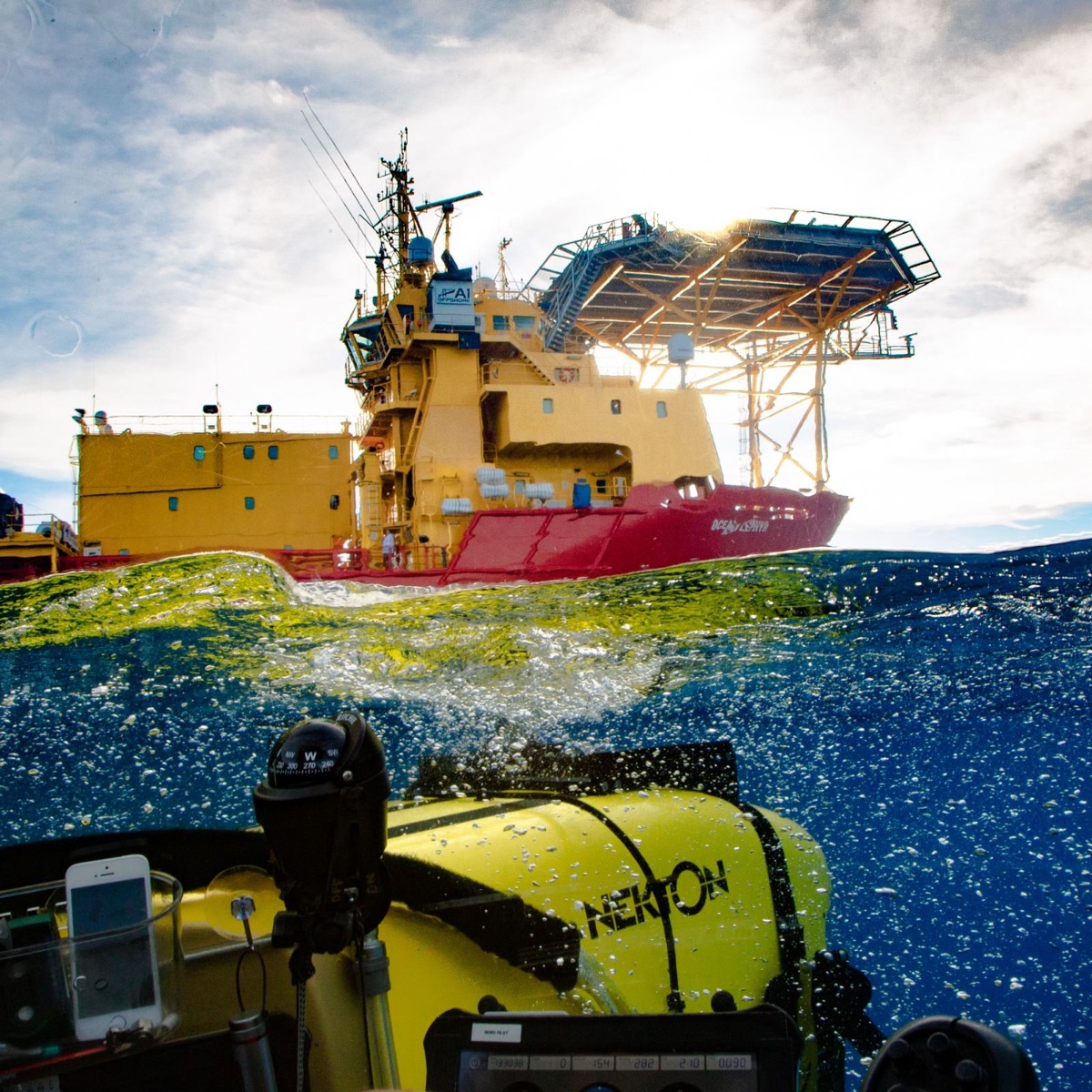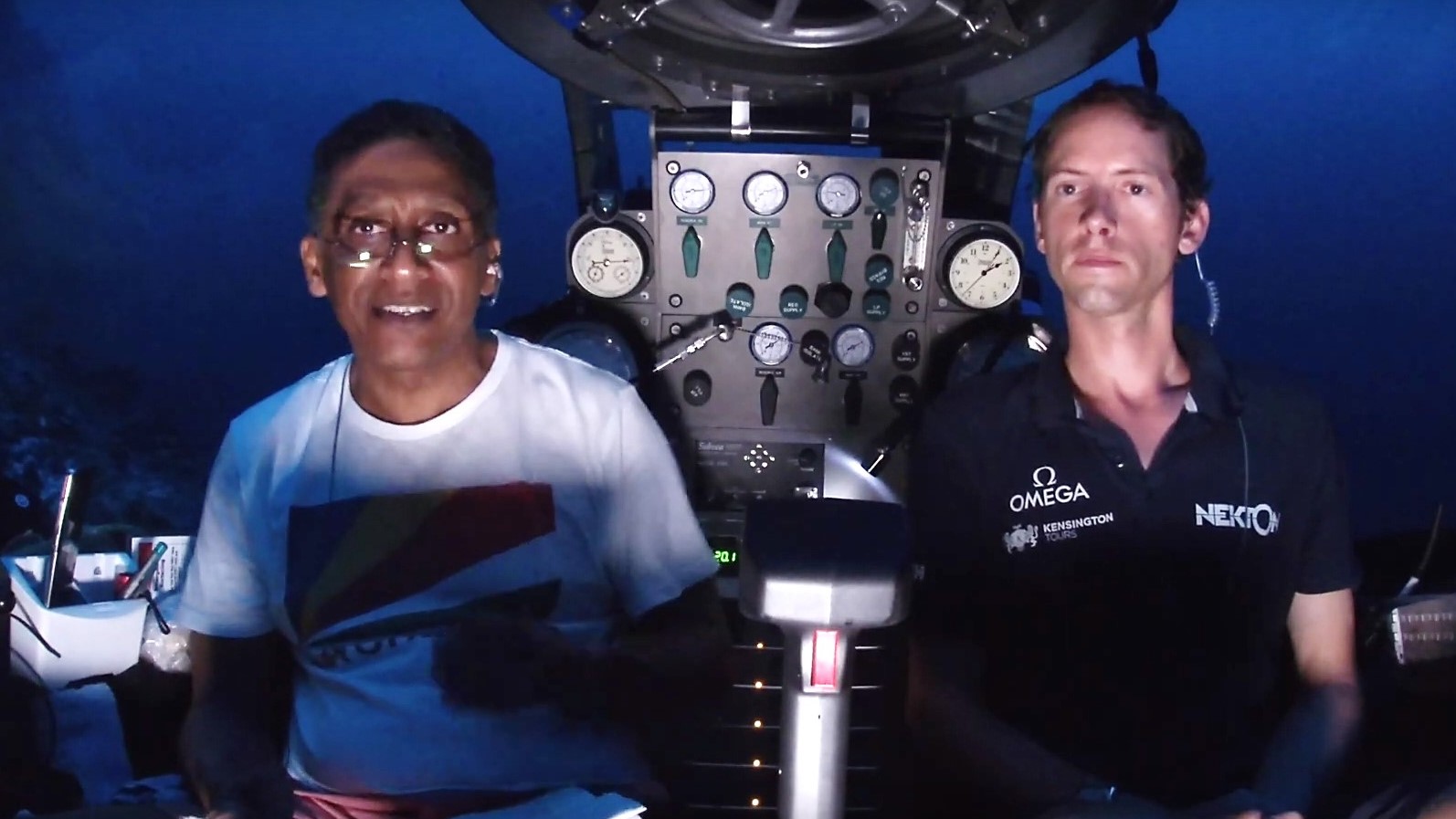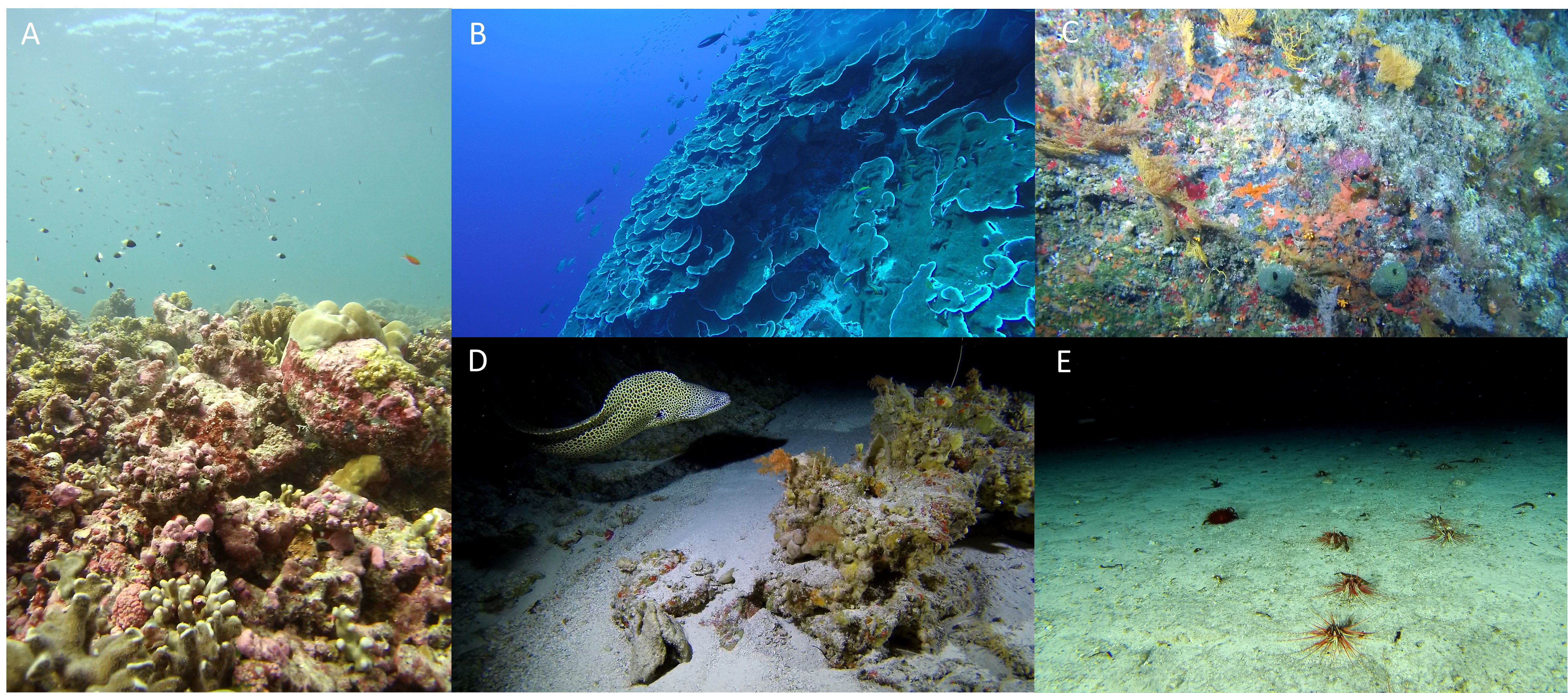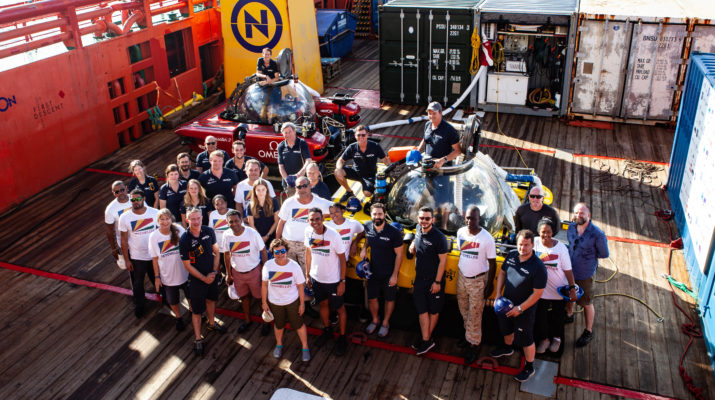[from Deep-Sea Life Vol 13]
Lucy Woodall1,2*, Paris Stefanoudis1,2, Louise Allcock3, Jennifer Appoo4, Clara Belmont5, Nico Fassbender6, Jonatha Giddens7, Jerome Harlay8, Damien Labiche5, Stephanie Marie5, Jeanne Mortimer9, Kaveh Samimi-Namin1,2, Molly Rivers2, Denise Swanborn1, Sheena Talma10, Rowana Walton1
1University of Oxford, UK, 2Nekton Foundation, UK, 3National University of Ireland, 4Seychelles Islands Foundation, 5Seychelles Fishing Authority, 6Global Vision International, Seychelles, 7National Geographic Society, USA, 8University of Seychelles, 9Island Conservation Society, Seychelles, 10Ministry of Environment, Energy and Climate Change, Seychelles
*Correspondence: lucy.woodall@zoo.ox.ac.uk
We are delighted to share news of our return from the successful launch of First Descent: Indian Ocean 2019‒2022, with our first major research expedition in Seychelles, working with, and on behalf of the Government of Seychelles.

Nearly 50 days at sea, covering 2300 nautical miles, with a team of up to 60 (Fig. 1), including crew, on our Mothership, the Ocean Zephyr (Fig. 2), we undertook over 300 science deployments, focusing down to 500m depth, across seven key locations in the previously unexplored depths of the Seychelles, helping to provide key data and new skills to inform the protection of 30% of Seychelles Exclusive Economic Zone (equivalent in size to twice the UK). In the process, there were 4,391 different broadcasts about Nekton – first live subsea presidential address (President of Seychelles, Fig. 3) – and 1,863 programming features across 244 media organisations in over 120 countries. Finally, hundreds of thousands of young people engaged including nearly 10,000 school children from 16 countries directly participating in live link-ups with scientists, engineers and technicians on board the Ocean Zephyr over a week during the expedition.

Here are a few snapshots to give you a sense of what we have achieved so far:

From the dramatic subsea cliffs of Astove and their unbleached healthy coral ecosystems, to abundance of predators around the World Heritage Site of Aldabra and sightings of six-gill sharks at 300 m, early indications suggest some truly remarkable ecosystems and the forms of connectivity across depths and islands. Observations also imply the existence of the Rariphotic Zone in Seychelles from 100+ metres depth. Some representative habitats across different depths are shown in Fig. 4.

Back on land, the real challenge begins: the processing, statistical analysis, and interpretation of the collected marine data. This will be a collaborative exercise between a series of networked laboratories from Seychelles, Nekton and participating institutes to develop capacity and accelerate findings. A host of science activities are planned in the coming 12‒18 months to ensure we will be able to achieve our science goals:
- Technical report of expedition activities with summary of all data collected.
- Two AfOx (African Oxford Initiative) fellowships to visit Oxford University in July 2019 and work together with the wider Nekton Team on data collected from the expedition.
- Taxonomic workshop in SAIAB (South African Institute of Aquatic Biodiversity) in July/August 2019 for participating scientists, joined by world experts, to work through selected samples and specimens from the expedition with the goal of accelerating taxonomic identification, processing, analysing and developing the expertise of local early career researchers. If you are interested in participating as an expert please let us know as we have a few positions left to fill.
- Training workshop in Seychelles in Autumn 2019 in order to develop data processing and analysis skills.
- A final workshop in Seychelles in May 2020 with all collaborators to share collective expedition findings to date, agree the datasets and tools to be provided, and determine any further steps towards capacity development or in support of ocean management.
Watch: High Five for Science (scientific deployments)
Read: Indian Ocean Science mission comes to an end
Find more about Nekton on Twitter, Facebook, Instagram, our website.

